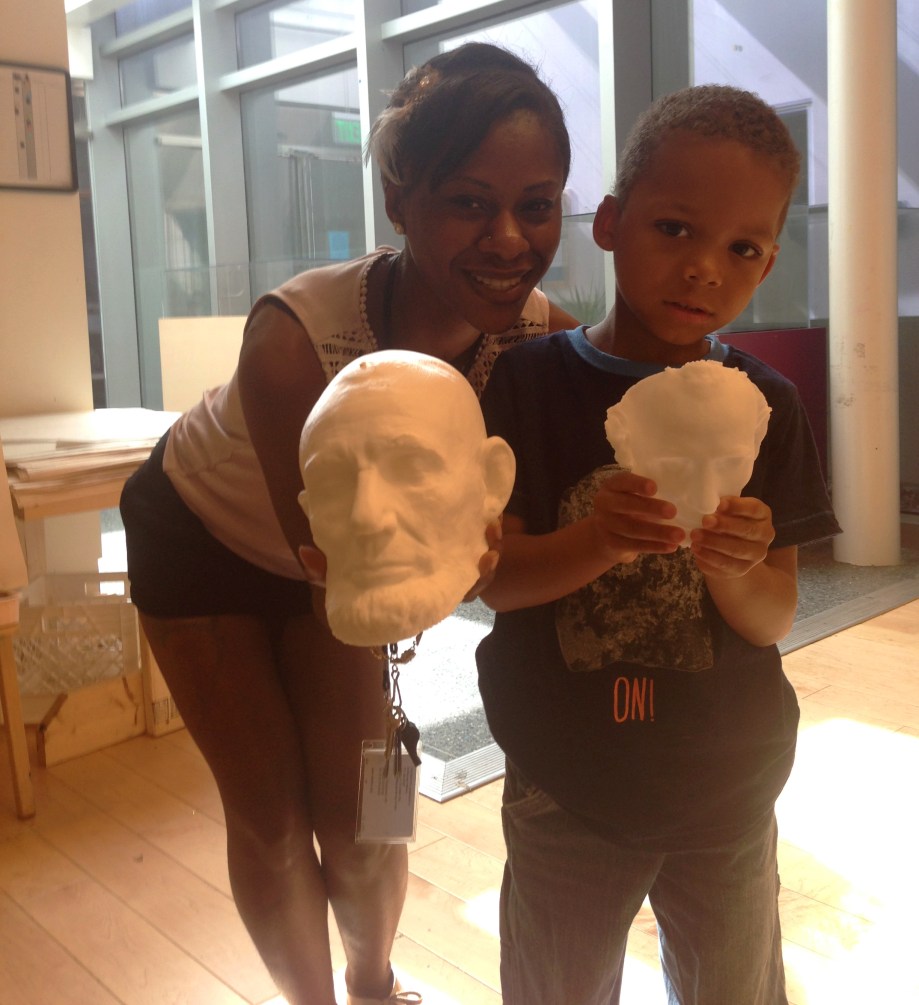The Smithsonian Early Enrichment Center is incredibly fortunate to have access to some amazing resources! It’s not just the museums but we often have wonderful experiences with the people working in the museums. For example, over the summer two of our classes were able to collaborate with colleagues at the National Museum of American History. It was great for our students to have an opportunity to work with one of American History’s interns and technology wiz Mariya Sitnova. The following post was written by Mariya and is shared on her behalf. Thanks for introducing us to some cool new technology, Mariya!
As an education intern at the National Museum of American History, I spent my summer working on various projects that bring the contents of the Museum content to classrooms across the country, including the Smithsonian’s very own classrooms in SEEC. My graduate studies at the Rhode Island School of Design (RISD) have focused on considering the potential relevance of 3D technology (3D scanning and 3D printing) in our every day lives. During this internship I was able explore this idea while working with the students and teachers at SEEC.
The Smithsonian is in the process of 3D scanning select objects from the collections and some are already available on 3d.si.edu. This summer I explored how young learners interact with these types of objects in 3D printed form.
My first pilot project was one I carried over from RISD. I had 3D scanned a few marine creatures from the RISD Nature Lab and added Lego “feet” in various positions. The idea was to 3D print something that enhanced the learning value of the 3D scanned object. The Lego connections resonated with the students because they were familiar with the brick toy concept. For the younger SEEC crowd I created a Duplo connection (the slightly larger Lego) and made the animals significantly bigger. The students asked interesting questions and proposed engaging narratives around these creatures. The wondered about where these creatures lived and where they would go with their new Duplo wheels. I’d be curious to keep going with the connections project by allowing them to choose where on the creature to add the Lego “feet” so they can explore the object even further in digital form.
The other project consisted of printing architectural models of the Capitol and the White House. The older group had planned to visit both buildings as part of their community theme. I created the 3D models using computer aided design software and 3D printed them in front of the students to gauge their responses. The project was to serve as a lead into a lesson on Abraham Lincoln whose life masks have been 3D scanned by the Smithsonian 3D team. The life masks are a more complicated concept, so we thought we could introduce 3D first through a simpler object and build up to the Lincoln material. I was genuinely impressed by the complexity of the questions the students asked about the process of 3d printing and 3d modeling and the models themselves. They were intrigued by how the printer functioned and how they could mix up materials to create these models in different colors and size.
Current preschoolers are going to grow up with this technology in their classrooms and maybe even their homes. It’s really impressive to see the Smithsonian pursuing projects that will help determine how this technology can take early education and museum education to a much more engaging level. I’m really looking forward to hearing more about the subsequent 3D projects in the future!














